Norlane, Victoria
| Norlane Geelong, Victoria | |||||||||||||
|---|---|---|---|---|---|---|---|---|---|---|---|---|---|
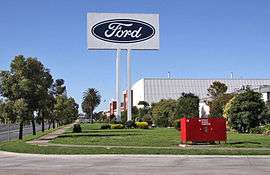 Princes Highway outside the Ford stamping plant in 2009 | |||||||||||||
| Population | 7,934 (2006)[1] | ||||||||||||
| • Density | 1,556/km2 (4,030/sq mi) | ||||||||||||
| Postcode(s) | 3214 | ||||||||||||
| Area | 5.1 km2 (2.0 sq mi) | ||||||||||||
| LGA(s) | City of Greater Geelong | ||||||||||||
| State electorate(s) | Lara | ||||||||||||
| Federal Division(s) | Corio | ||||||||||||
| |||||||||||||
Norlane is a northern suburb of Geelong, in Victoria, Australia. Norlane is located about 7 km from the Geelong central business district and approximately 70 km from the state capital, Melbourne. Situated 1 km from the Port Phillip Bay, Corio Bay, North Shore Beach.
History
The suburb of Norlane was named after Norman Lane, a local serviceman from the district who died working on the Burma Thai Railway in 1943, after being captured in Singapore.[2]
The Post Office opened on 17 December 1945 as development of the suburb began. Later, the Post Office of Norlane West opened on 13 October 1958.[3]
With the enormous pressure on housing in the early 1950s, residents resorted to small dwellings, tents and partially completed buildings. The Housing Commission of Victoria provided accommodation for families unable to rent or to afford the purchase of their own home.[2]
In 1947 the government Housing Commission began its house-building program in Norlane, and by 1976 when its program was completed there were 2,464 commission houses available for low income renters. Much of the housing was for employees at the nearby Ford Motor Company, International Harvester, Shell, Pilkington Glass, Hendersons and Pivot Phosphate factories.
As workers hungry for employment (among them wartime migrants building new lives) flocked to Geelong to take up jobs the Victorian Government responded through its Housing Commission by buying up broad acres north of the Ford plant and building homes by the hundreds. Norlane was quickly transformed from paddocks to busy working class suburbia in a decade. By 1960, the urban landscape of streets, roads, crescents, courts and boulevards which we know today had extended as far as Corio Village. For Geelong, it was an amazing and exciting time.
Many of the houses built in Norlane were prefabricated units imported from the Netherlands and France.[2]
The suburb contains one site listed on the Victorian Heritage Register, the Ford Motor Company Complex on Melbourne Road.[4]
Demographics
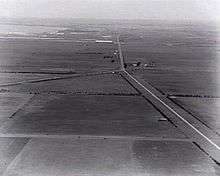
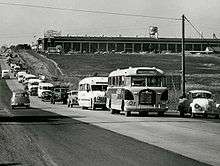
In the 2001 Australian Bureau of Statistics Census of Population and Housing, the population of the Norlane census area was 8,628 people, in an area of 5.1 square kilometres. Females outnumbered males, with 4,436 females and 4,192 males as of 2001. Some 24% of the population of Norlane were born outside of Australia.[5] The predominant age group in Norlane is 40 – 49 years.
The three most common forms of dwelling were (in decreasing order): a separate house, a flat or apartment and a semi-detached house.[5] Residents enjoy generous land parcels, ample backyards with single story weatherboard housing built during the 1960s on 600 to 800 square metres blocks, progressively brick based sud-division buildings and double story dwellings on approximately 300 square metre lots are beginning to become more common, with higher rise especially where views of the peninsula from a higher rise viewpoint are applicable. In August 2010 the median sale price of houses in the area is $184,500 up 15% from the previous year but generally raising by a modest 10% per year on average. 2002 saw a 38.9% growth in real estate value. Demand for renting a home in Norlane is good with an expected rental return of $180 to $220 per week for a 3 bedroom house in comparing the price of property it is a reason why some choose to invest in Norlane.
A majority of residents of are employed (in decreasing order) in Engineering (6.83%), Management and Commerce (2.2%) and Food, Hospitality and Personal Services industries (1.5%).
The five strongest religious affiliations in the area in 2001 were (in descending order): Catholic, Anglican, Orthodox, Presbyterian and Uniting.[5]
Facilities
Affordable housing close to shopping, transport and Geelong's largest employers make Norlane a popular suburb. Norlane's Waterworld boasts 2 25m indoor heated swimming pools, spagymnasium, two water slides, diving pool, outdoor children's pools and a splash-pad. Water World is located at Cox Road on the northern border of the suburb.[2] Labuan Square shopping centre opened in 1954.[2] but has since been largely superseded by the Corio Shopping Centre. Labuan Square, and other smaller shopping precincts around Norlane provide residents convenience within walking distance. Norlane Hotel on the Princes Highway is the largest local gambling venue and its bistro offers reasonably priced food. Additionally, there is the Norlane RSL Sub-Branch situated at 29 Rose Ave. Bunnings opened a new store on Princes Highway in early 2013.
Norlane has several churches. There are three nearby boat ramps: Corio Bay Boat Club, Grammar School Lagoon Boat Ramp and St Helens Boat Ramp. There are seven parks covering nearly 9% of the total area, with ovals and facilities for skating and ball games.
Schools
Primary schools in Norlane were opened in 1955 and 1962, and a high school in 1959. The Norlane Primary School closed during the 1990s and is now a private college, Isik College. North Shore Primary School and also the Norlane High School remain open as of 2007. Other schools include Norlane West Primary School, St Thomas Aquinas Primary School and Geelong Kindergarten Association.
Transport
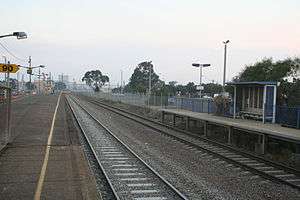
Cars are the preferred method of transport in Norlane, followed by walking and bicycles.[5]
North Shore railway station is located in Station Street, Norlane on the south eastern border of the suburb, with V/Line providing two-hourly rail transport on the Geelong line to both Melbourne and Geelong central business districts. The train between Geelong and Melbourne stops at the station in the south-east corner of the suburb.
Several highways provide convenient and speedy transport with the Princess highway being the main arterial from Melbourne to Norlane or from Norlane to Geelong city centre. The new Geelong Ring Road providing a Geelong city centre and greater Geelong bypass for faster access to coastal areas including the popular surfing and holiday destination, Torquay and other coastal towns along the south west of Victoria such as Lorne and Apollo Bay. The Midland Highway provides direct route to Ballarat and to northern Victoria and Bacchus Marsh Geelong Road as the name suggests. There is also a ferry from Queenscliff to Portsea twice daily.
A number of bus lines serve Norlane, they are as follows.
- Route 1 - to Geelong and Waurn Ponds and to Corio. Every 20 minutes on weekdays and every 40 minutes on weekends.
- Route 20 - to Geelong and to Corio. Every 20 minutes on weekdays and every 30 minutes on weekends.
- Route 22 - to Geelong. Every 20 minutes on weekdays and every 30 minutes on weekends.
- Route 23 - to Corio. Every 20 minutes on weekdays and every 30 minutes on weekends.
Census populations
- 1947 - 347
- 1971 - 12,098
- 2001 - 8,616
- 2001 - 8,945 Norlane and North Shore combined
- 2006 - 7,935
- 2006 - 8,254 Norlane and North Shore combined
Norlane photo gallery
 A typical 750m2 lot backyard
A typical 750m2 lot backyard A typical front yard and street
A typical front yard and street A typical 3 bedroom house in Norlane
A typical 3 bedroom house in Norlane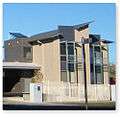 New style commission housing
New style commission housing
References
- ↑ Australian Bureau of Statistics (25 October 2007). "Norlane (State Suburb)". 2006 Census QuickStats. Retrieved 1 October 2007.
- 1 2 3 4 5 City of Greater Geelong, Norlane, accessed 31 January 2007 Archived 27 August 2006 at the Wayback Machine.
- ↑ Premier Postal History, Post Office List, retrieved 11 April 2008
- ↑ "Ford Motor Company Complex (H2305)". Victorian Heritage Register. Heritage Victoria. Retrieved 2014-03-23.
- 1 2 3 4 Australian Bureau of Statistics Census of Population and Housing, accessed 31 January 2007
External links
- Norlane Redevelopment Precincts
- Corio Norlane Development Advisory Board
- Redfern makeover plan for Corio and Norlane
- Guide To Boat Ramps In The City Of Greater Geelong
Coordinates: 38°05′31″S 144°21′22″E / 38.092°S 144.356°E